It’s been years since I’ve played with a Lensbaby lens. But whilst I don’t partake, I do keep up with what they’re up to – I find their slightly nutty lens ideas fascinating. I also enjoy the fact that even if I don’t feel a need for the sort of images their kit creates in my life, there are many other people who do. In a world filled with photographers desperately hunting for objective perfection in lenses, the likes of Lensbaby (and Lomography for that matter) give me some faith that modern photography isn’t entirely lost to those who operate at around 200% in the photo editing software.
Of course, you only need to read a comments section on a Lensbaby lens release announcement on DPR to see that there are large swathes of people who just see this sort of kit as a gimmick. People also often talk about this sort of gear as being designed to make boring photography more interesting. There is some truth in this too. It’s hard to argue with the fact that there a lot of images out there in internet-land taken with lenses like this that are fairly unimaginative by merit of their natural composition and content, but are arguably slightly enhanced by the strong character of the lens they were taken with. Have a browse of the images I’ve produced and you might find yourself thinking that I’ve added to the dirge myself – I’d possibly agree with you too.
A perfect lens…?
The reality is though, objectively perfect lenses aren’t always the perfect choice for the subject matter either. It’s just as possible to take a terrible photo with a very “good” lens as it is possible to take a great photo with a very “poor” lens. The right lens for a particular subject or desired outcome goes beyond choosing focal length and shooting aperture. Lens character has a big impact on the outcome of our work, the trick is to match the character and outcome to the extent that the choice of gear becomes invisible in the end result and all that remains is an image that emotes something in the viewer. After all, as photographers our audience should be largely made up of non-photographers, i.e. people who don’t care about things like lenses and cameras. I go into this topic a lot more in my post about the definition of the “perfect lens”.
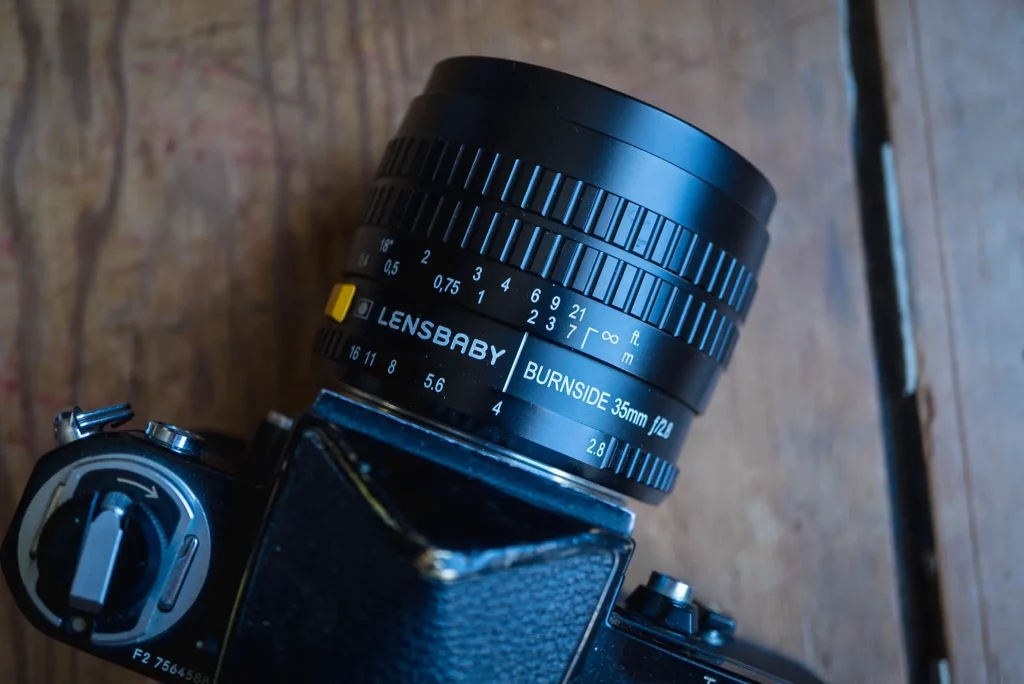
I mention all this as it ties in quite nicely with my background with Lensbaby gear. I had one of their early lenses. I can’t remember what it was called, but it was essentially a bit of corrugated bendy tube with a lens on the end and three threaded pins to set it. It was a faff to use, and I can’t remember getting a single photo out of it that I was happy with. I gave it away in the end.
I bought it because I saw some really interesting images taken with it. Looking back, the problem I had with creating good images with it was that in use, I can’t remember ever having a goal or any sort of image or specific outcome in mind. My ability to pre-visualise my photography is a relatively recent thing, so I can imagine me attaching it to my camera and just pointing it randomly at things in the hope that I could capture something vaguely interesting, or at very least find something that would be enhanced by the character of the lens. I was searching for a photo to take, rather than having a photo in mind that the lens character was suitable for, and pursuing that.
The difference these days is that when I first saw this lens announced, what came to mind was how it would make for good shots of my kids in their crazy little worlds. I then started thinking about how I could use it for shots of urban decay. Normally I wouldn’t think beyond that far – as I say, I don’t really think this sort of strength or type of lens character fits my style, but the combination of features on this particular lens caught my eye… and actually it looked a lot easier to use than the early Lensbaby I tried, so I thought why not give it a bash – I got in touch when Lensbaby, and they agreed the loan.
The Lensbaby Burnside technical bit
First things first, the Lensbaby Burnside is a 35mm f/2.8 lens with a close focus distance of around 15cm (6”). It has a normal manual focus control with a fairly long focus throw. It also has a normal clicked aperture. There are no electronic or mechanical connections to the camera in any of the mount variants (at least not as far as I understand).
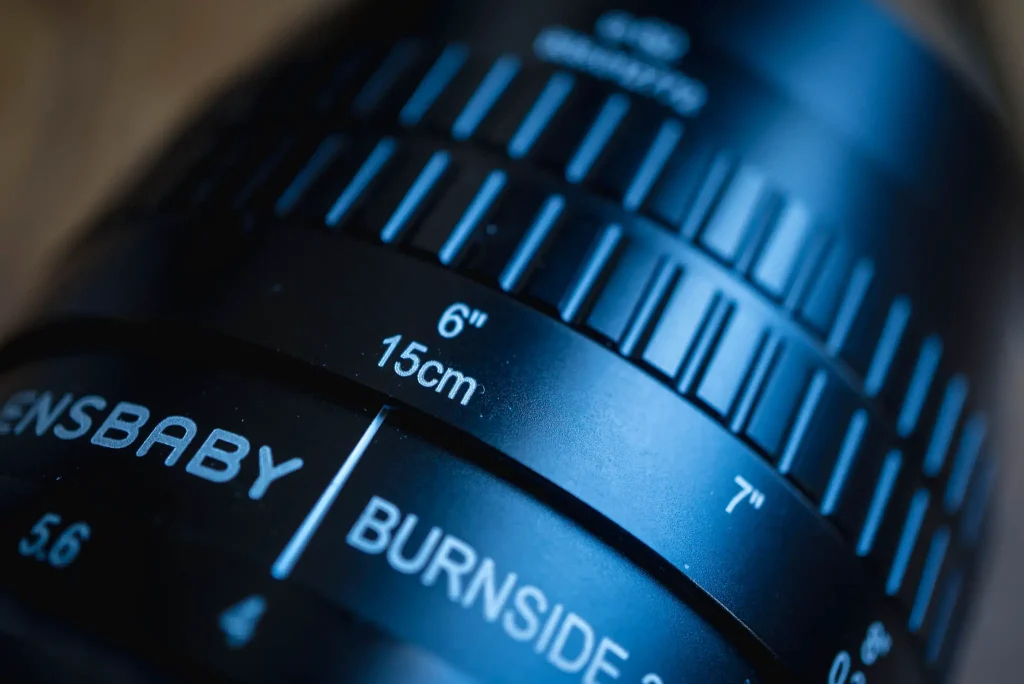
Beyond these conventional features, the Burnside has a secondary iris toward the front of the lens. This is controlled by sliding the gold-tipped lever on the side of the lens close to the camera body. This secondary aperture is not intended to control overall exposure, instead, it increases mechanical vignetting in the lens.
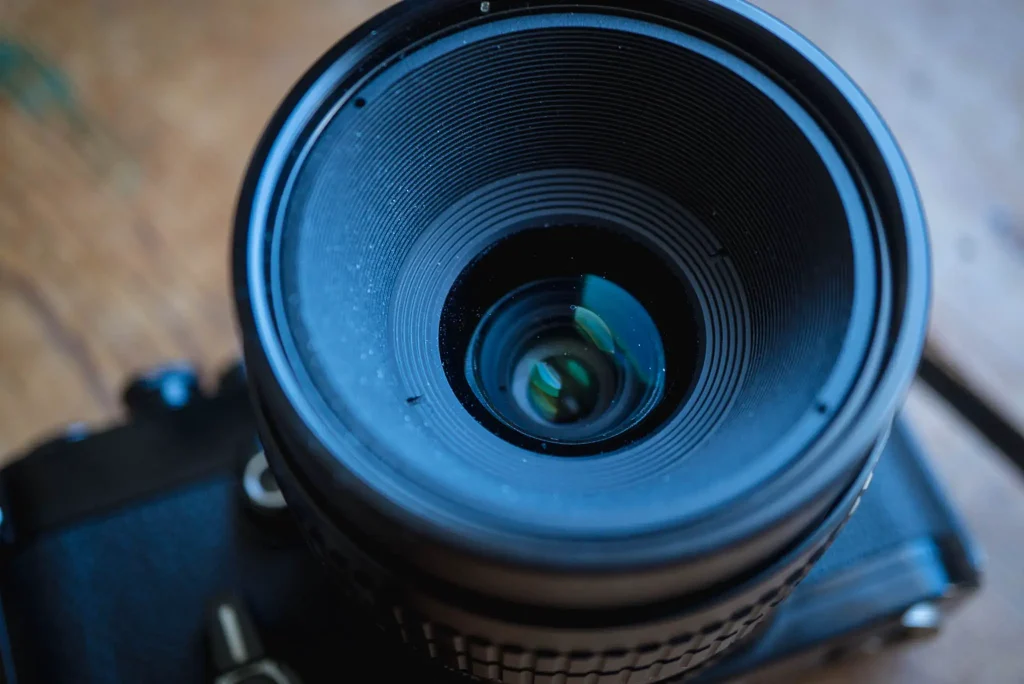
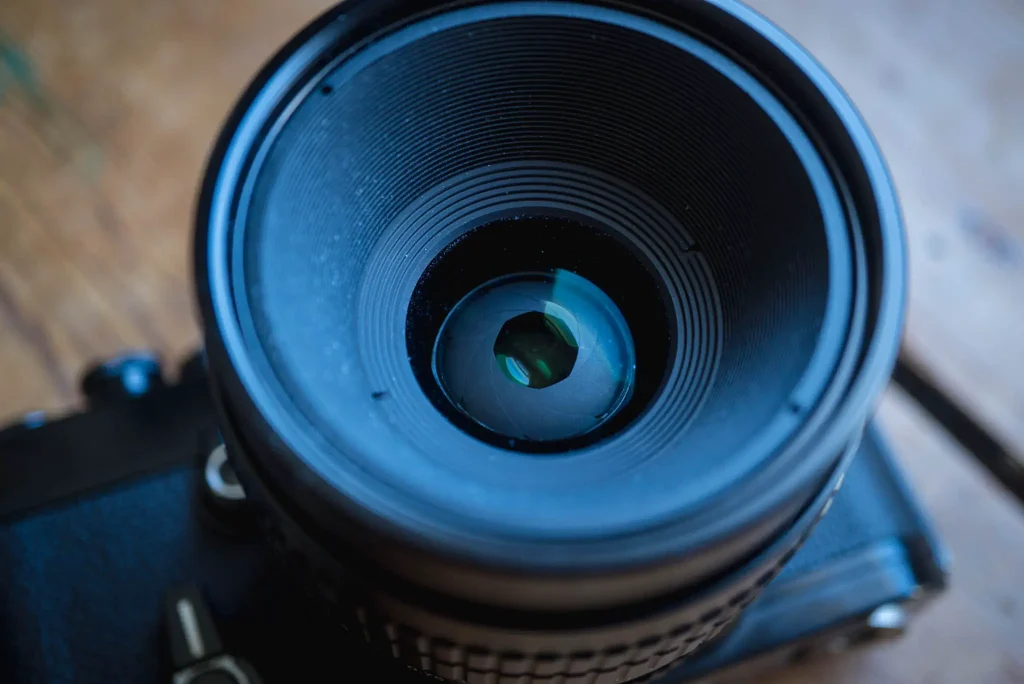
Build Quality
I must admit, I was a little surprised by the overall feel of the Lensbaby Burnside. It’s bigger than I expected, and for its size, isn’t overly heavy. But there’s nothing about it that doesn’t feel well made. It has a particularly smooth focus ring, and both iris controls click nicely. It seems these guys have come on a long way since the days of corrugated tubes and threaded adjustment pin things.
Character traits
The Lensbaby Burnside is – to say the least – characterful. Shot wide open, it’s sharp in the middle at close distances, but very quickly gets soft toward the edges of the frame. Stopping down seems to slightly increase the size of the sharp centre, but it never becomes particularly sharp when shooting distant subjects. As such, it’s very much more suitable – and arguably indeed designed for – near subjects such a portraits. It’s certainly not what you might call a “conventional” 35mm f/2.8 lens.
Of course, much of the design idea behind this lens is to do with the out of focus rendering. The inside the of Burnside box even has printed instructions – which I forgot to photograph before I sent it back – on how to readily achieve the swirling background look. They are as follows:
To get an image with dramatic bokeh swirl with Burnside 35, shoot at f/2.8 with your subject 3 feet or less from your camera. Make sure there’s separation between the subject and the background – at least 12 feet.
Without using the secondary aperture, the background swirling is quite evident. It’s very swirly, but the bokeh is slightly more gentle looking. Stop down the secondary aperture and the mechanical vignetting causes the shape of out of focus highlight to compress, the bokeh to look more hard, and the swirling becomes slightly more pronounced.
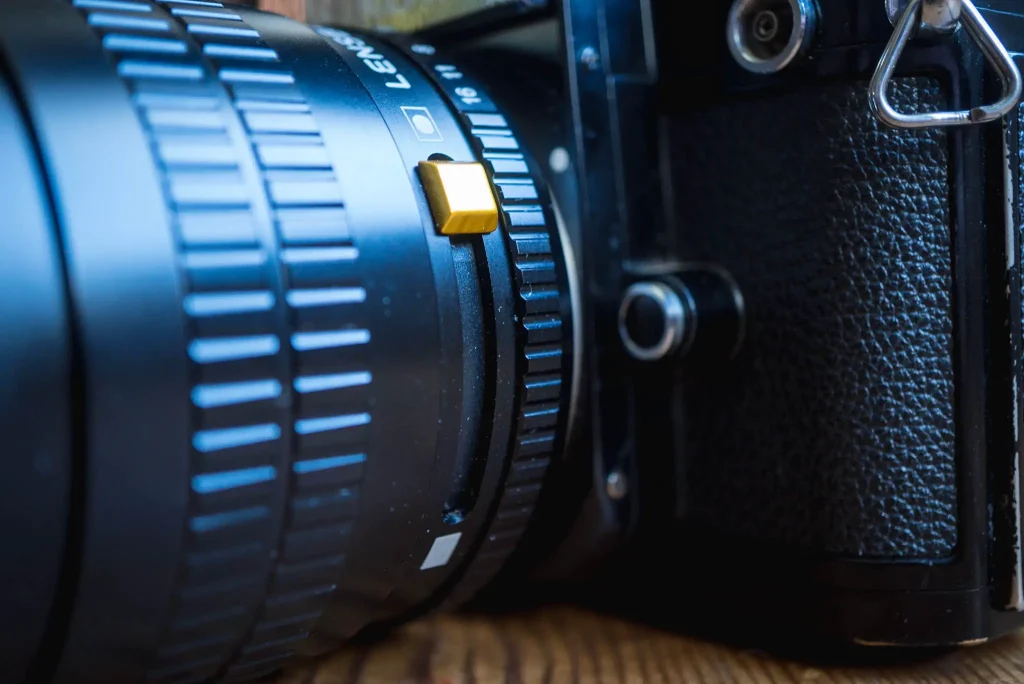
The secondary aperture also darkens the periphery of the frame which combined with a swirling out-of-focus background has the effect of drawing the eye to the centre of the frame. Of course, the amount the background swirls is entirely subject dependent, and as is highlighted by Lensbaby’s instructions, is also impacted by subject to camera and subject to background distance.
Harnessing the character
So, as I said earlier on in the post, when I first saw the lens advertised I had these two ideas about how I would use it. As such with the lens in my hand, I set about seeing if I could bring those ideas to fruition. I did also poke about with the Lensbaby Burnside with less intent, but as you’ll see, and as I’ve mentioned, I didn’t get anything much too exciting. Though at least some of the shots do show the various effects of using this lens in different circumstances.
Knowing I was going to write this review, I also used it with two very different cameras so I could write about the experience from a usability point of view too. As you might expect shooting it on film compared to shooting it on digital gave a very different experience. As you’ll also read, I probably chose the subject/camera combination badly. This worked out quite nicely for the benefit of the review, but it’s fair to say that I didn’t exactly make my life easy for myself.
A Nikon F2 & photos of my kids
The shot I had in mind was one or both of the kids doing something daft with a swirling background. This first image amounts to something close to a success for me. I had Norah’s attention – which is a feat in itself – and managed to capture something of her crazy little character; she was trying to turn me into a frog with her wand… This was shot wide open, with the vignette control ramped up to the maximum.
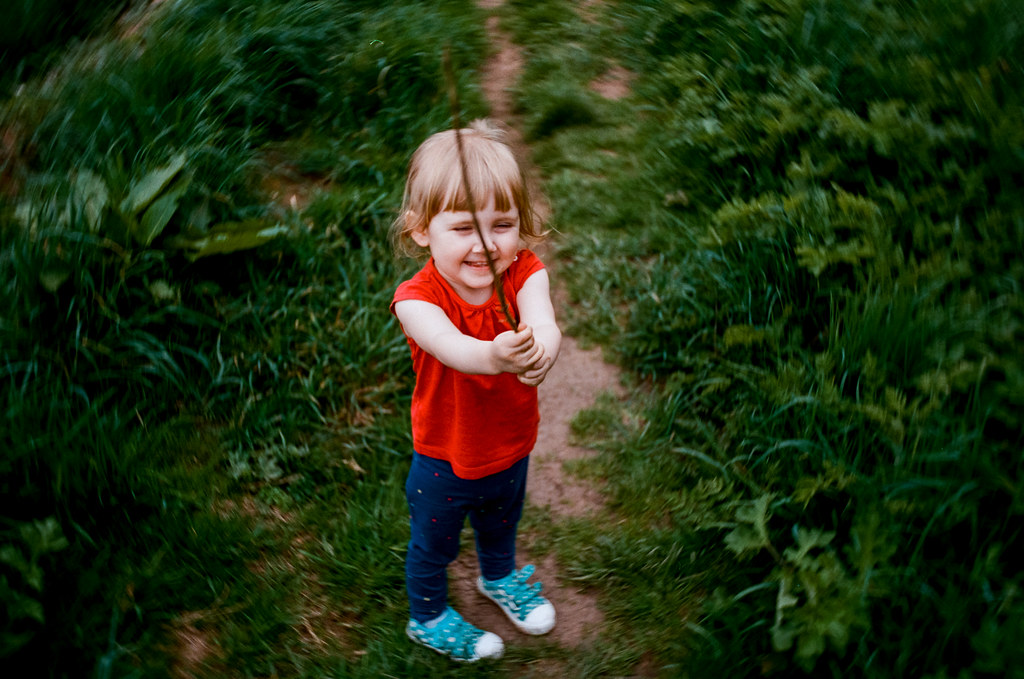
For the most part, being kids, they didn’t play ball at all. This was compounded by the fact that, as it turns out, the Lensbaby Burnside is harder to use on a film camera than I thought it would be. I borrowed a Nikon mount lens with the specific intention of mounting it on a Nikon film camera. I knew I could also adapt it to my Sony, so this seemed like the most obvious thing to do. What I hadn’t counted for was that it wouldn’t have any of the relevant mechanical connections to the camera to automatically stop down the aperture – the Lensbaby Burnside is, as mentioned, completely dumb.
The biggest problem with this being the case is that if you want to shoot stopped down at all with a film camera you either have to frame and focus stopped down, or frame and focus wide open then stop down at the moment of exposure. With option-1 and the likes of the Nikon F2, the split focusing screen isn’t designed to work at smaller apertures, so half of it blacks out. With option-2, process of focusing wide open, then stopping down to shoot was just not practical for the subject matter. This is because the Lensbaby Burnside doesn’t include the luxuries given by proper manual stop down lenses, ie it’s very hard to do quickly with the camera to your eye.
This was further compounded by the fact that there’s no depth of field scale on the lens, making zone focusing less practical too. In short, the closest other shots I got to capturing what I had in mind came out slightly more blurred than I’d have liked. That all said, I did still manage to capture a couple of frames that as an extension of the original idea pleased me. Some of these also show the nature of the Lensbaby Burnside character really quite nicely.
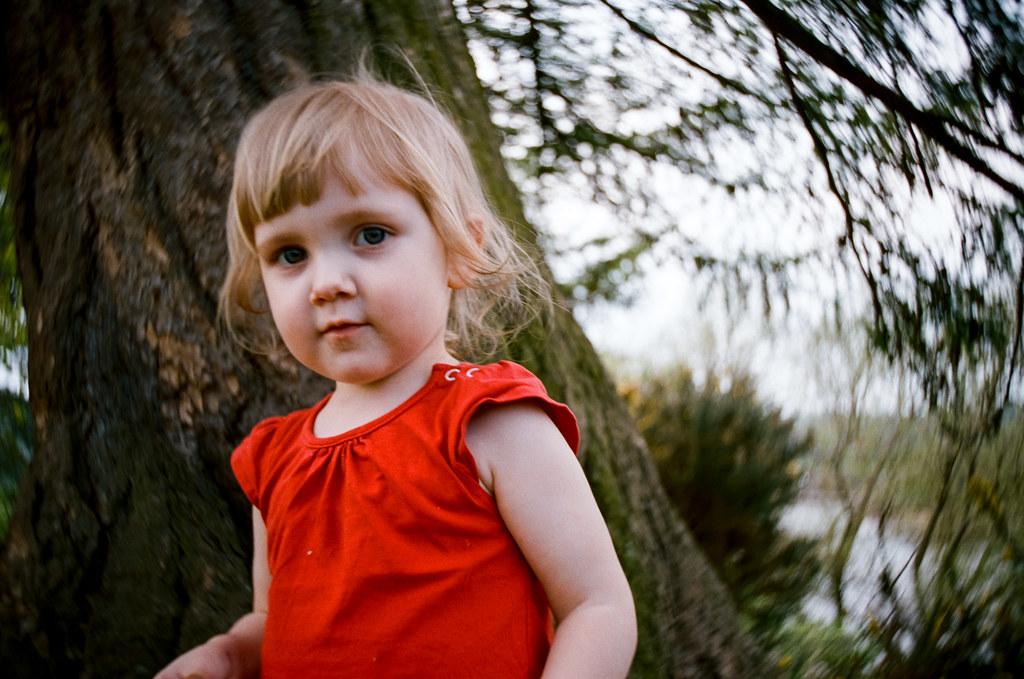
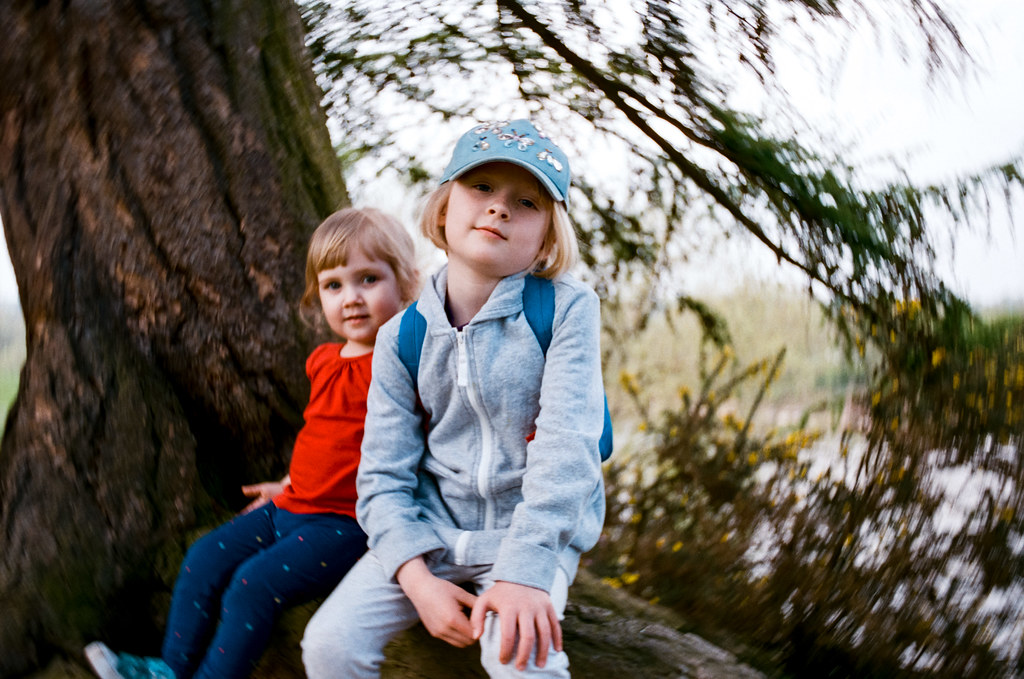
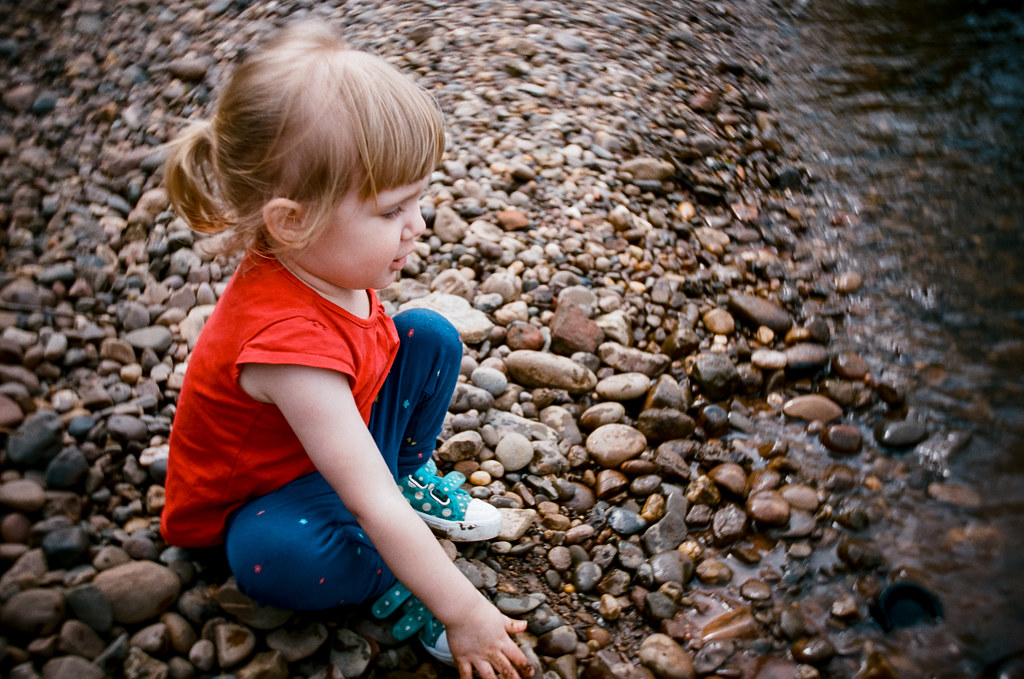
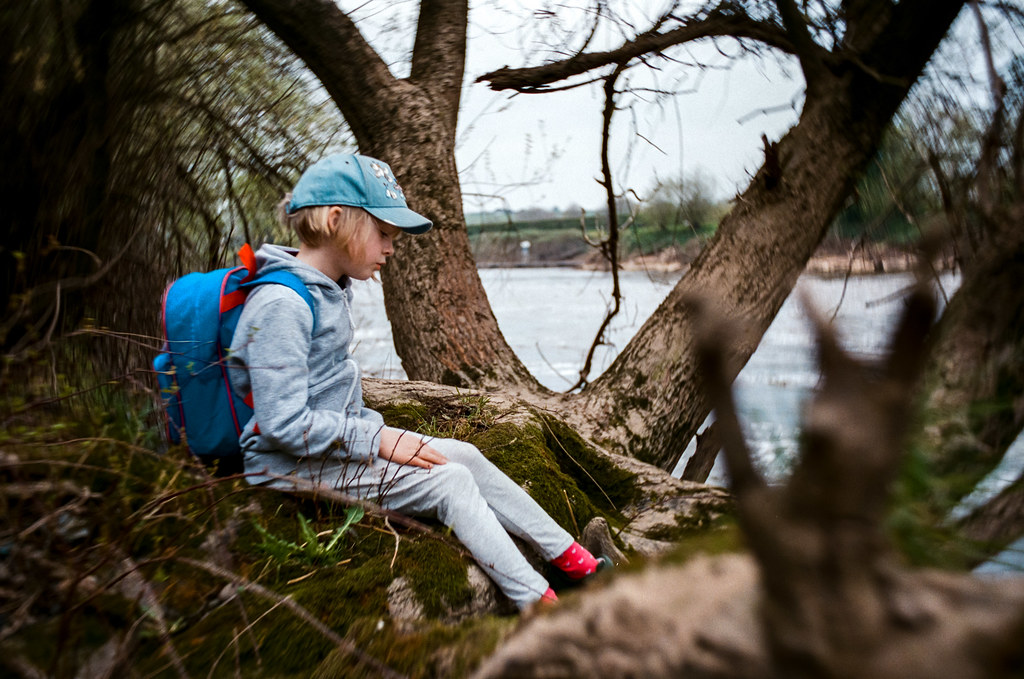
I also snapped a few throwaway shots, which whilst far from being compositionally great, or even that interesting in terms of the subject matter, once again they do at least show something of what you might expect from this lens.
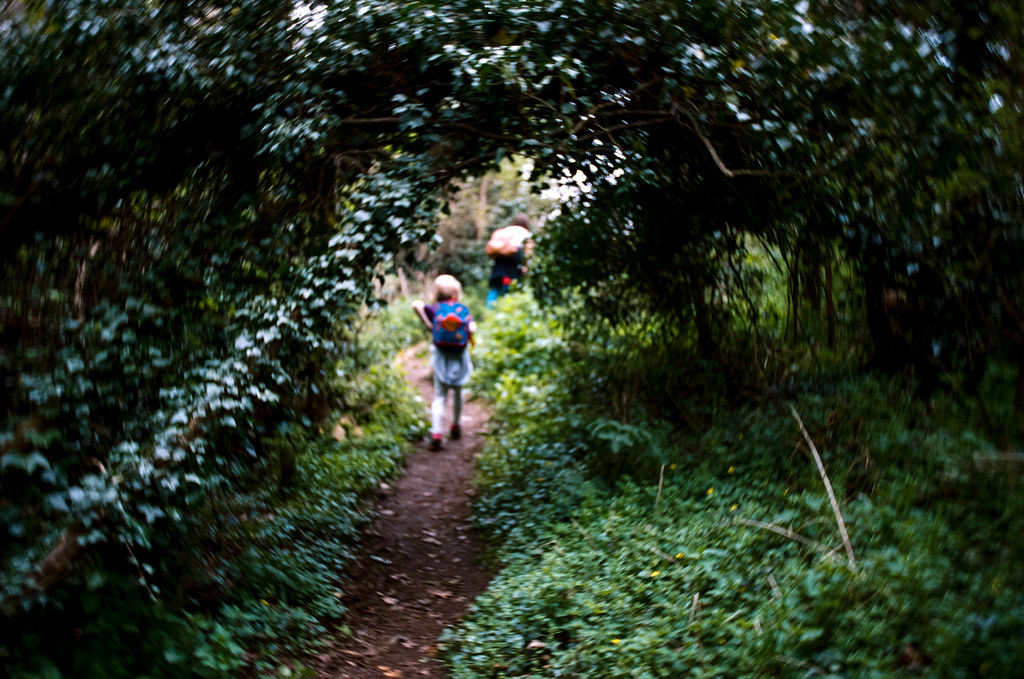
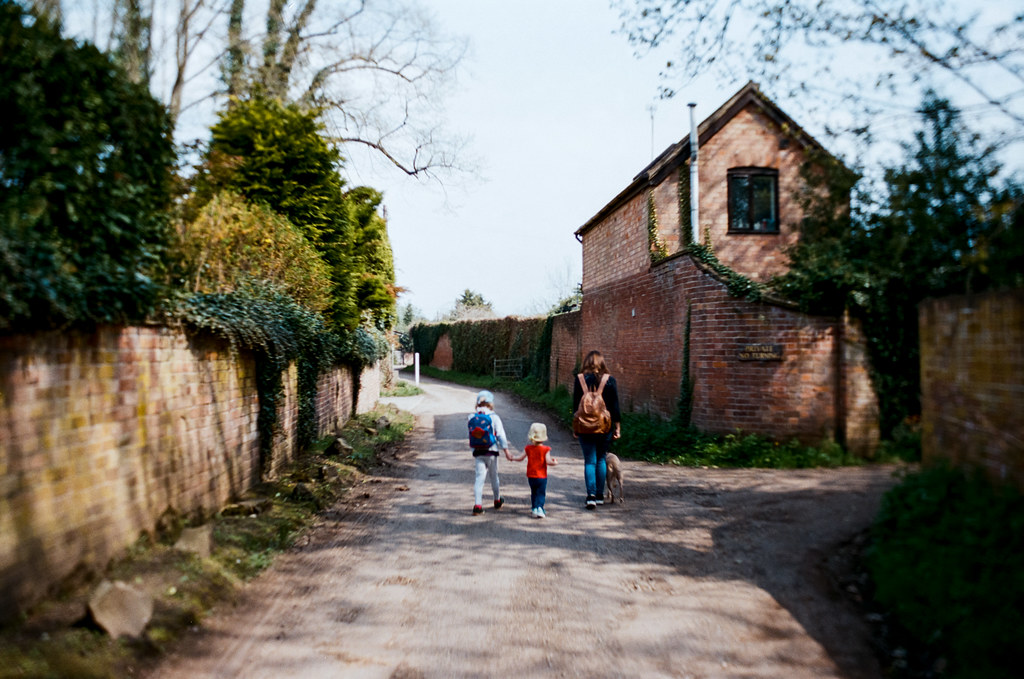
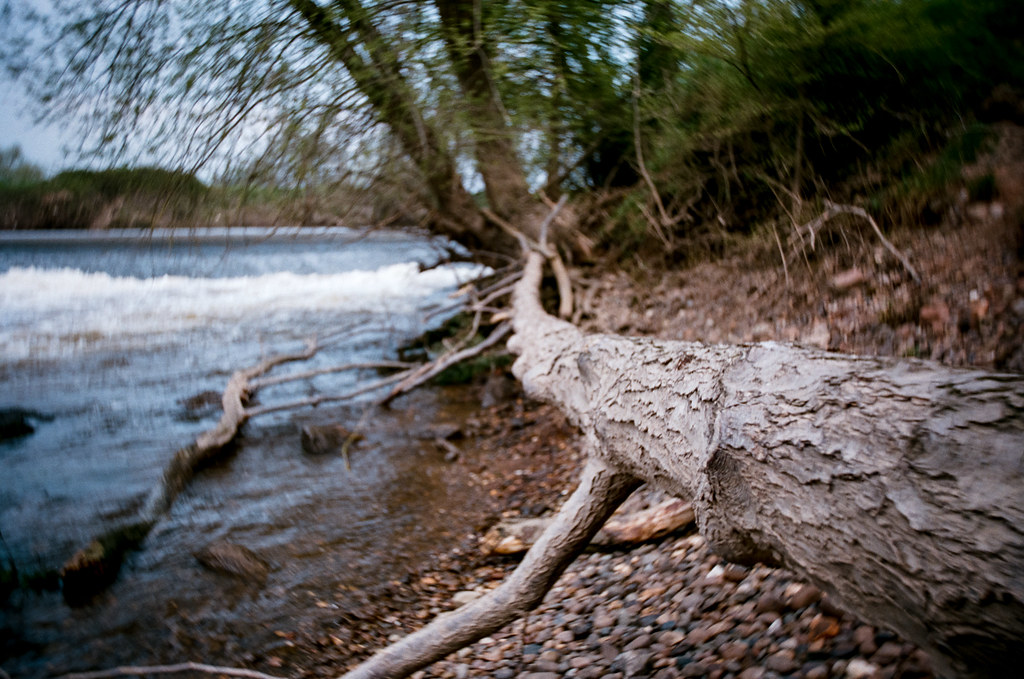
The Sony A7Rii & photos of urban decay
Using the Lensbaby Burnside with less erratic, or indeed entirely static subject matter is of course, easier. Additionally, using it on a digital camera makes for a much less taxing process – in fact, I’d go as far to say that shooting this lens on a Sony full frame camera is actually really quite easy compared to shooting it on a Nikon F2.
The proper live-view screen of the Sony A7Rii that automatically compensates for the darkening caused by a stopped-down aperture made focusing significantly easier. Framing was easier too. In fact not having to think about what aperture I was at and, what aperture I wanted to be at, and how I was going to achieve that without losing my point of focus, just made for an entirely easier process of shooting. This all said, it’s still not an overly easy lens to use compared to conventional lenses. I found myself magnifying the view to check focus a lot which can be quite distracting, and it’s hard to retain sharpness in your subject if it’s off centre, especially at the widest apertures.
I did get some images I like though. In fact, as far as the urban decay idea I had in mind goes, I can quite comfortably say these images represent what I wanted to achieve when I set out to borrow this lens. I did have to do quite a bit of post process to get the files how I wanted them. I even added a bit of artificial grain to rough them up a bit, which is something I never do, but felt it was needed achieve what I’d had in my minds eye to start with.
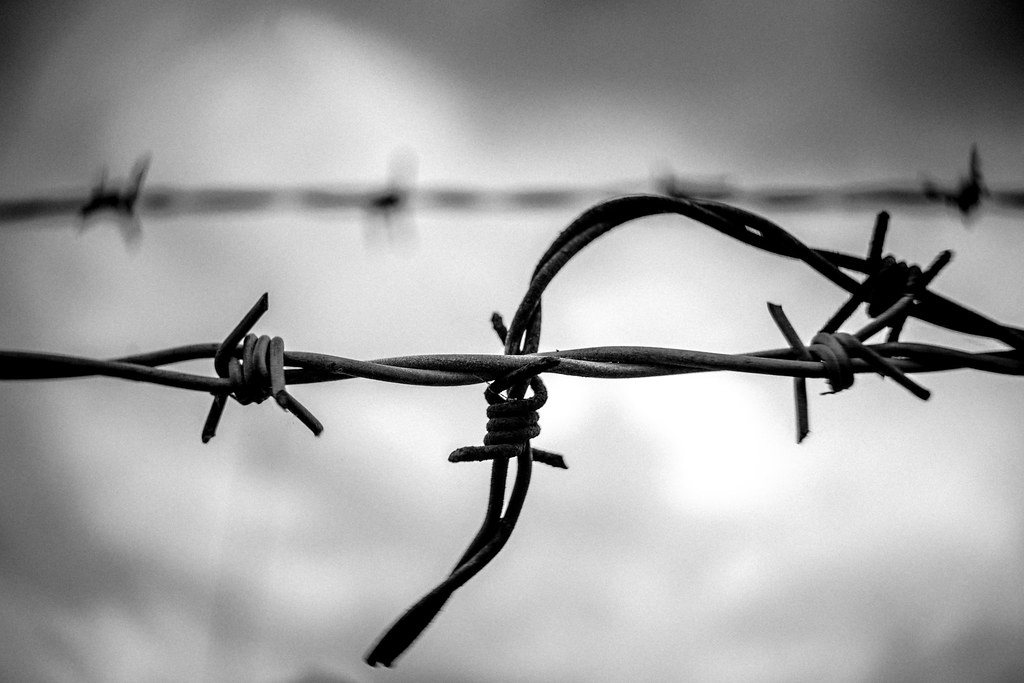
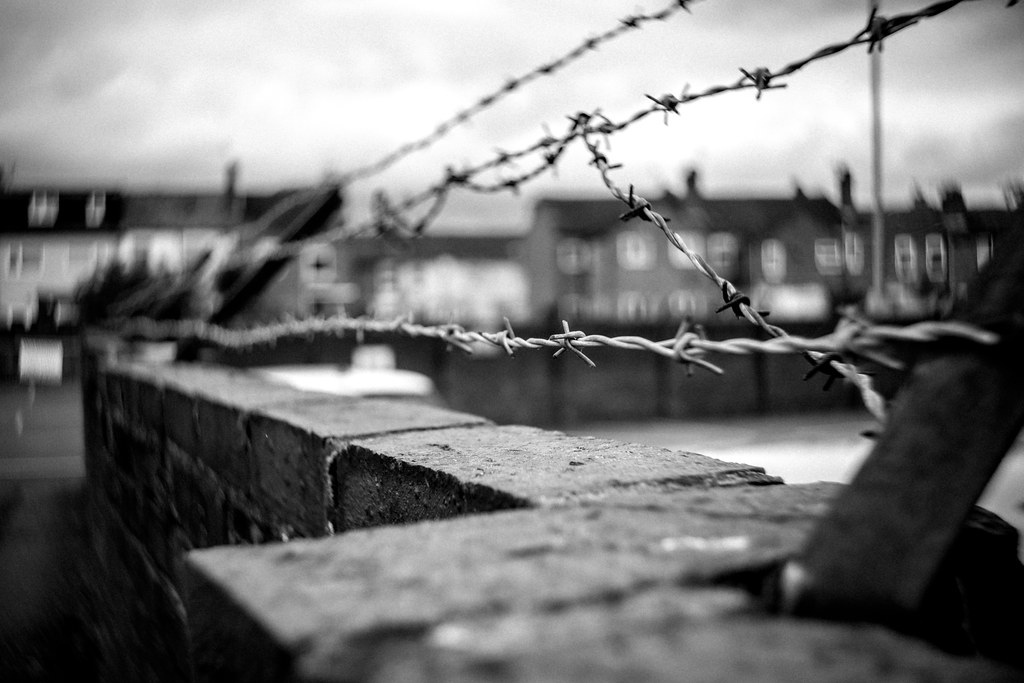
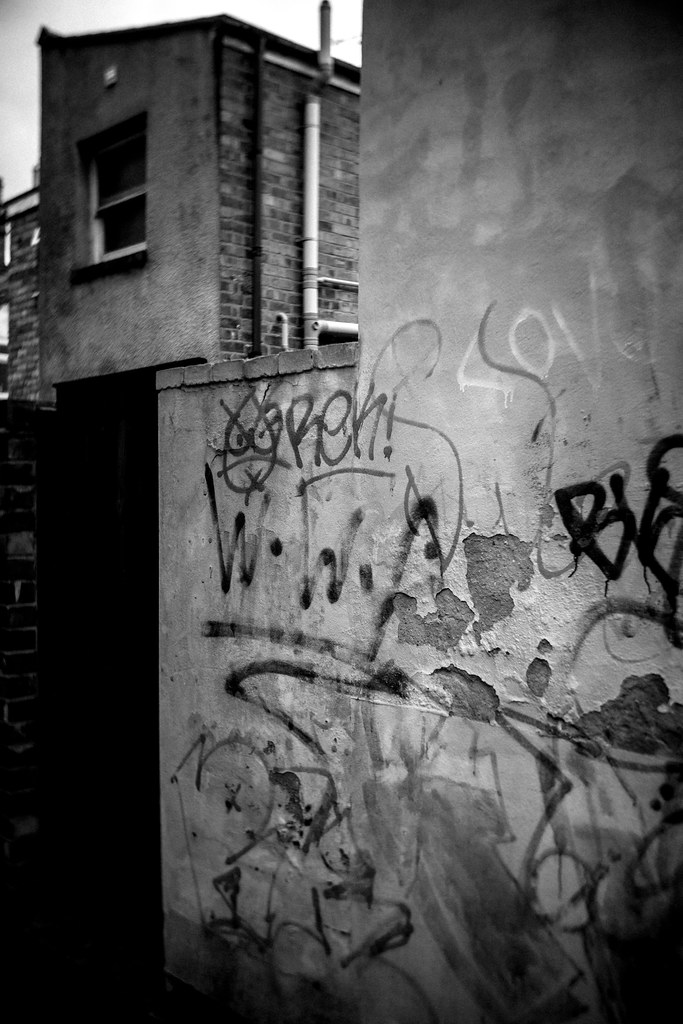
For the sake of ease and actually achieving the results I wanted, what I should have done is shot the kids with the Sony, and shot the urban decay shots I had in mind with a roll of Streetpan or the like. Shooting that way around would have likely reaped much better results and caused me less grief. That said, as I said earlier, this way round, at least it feels like it makes for a more in-depth review.
Thoughts on the secondary iris control
You might notice that I’ve not really gone into much detail about my use of the secondary iris control. This is largely due to the fact that I didn’t use it much, and when I did, I preferred all of the images with it ramped up to full compared to anywhere else in the range. As much as anything else, I’d say this is more part of the problem with reviewing borrowed lenses than anything else. This is especially true when borrowing lenses with unique borderline-novelty features like the secondary iris control found on the Lensbaby Burnside. The time spent with the lens when borrowing one for review often feels like it roughly equates to the novelty period, and doesn’t factor what happens once you get to know and learn the lens longer term. I think given more time, I would have actually come to use the secondary iris control more, learnt it’s subtleties, and got to grips with how and when to use it to greatest effect.
The Lensbaby and my style
Unfortunately for the sake of my relationship with the Lensbaby Burnside, to get to that stage I think I would really need to feel like this lens could make up a big part of the style of my photography, which simply isn’t a reality. Whilst I do quite like some of the images I produced with the Lensbaby Burnside – and they very much fit the ideas I had in mind – I’m just not convinced on a personal level that the lens suits me and my photography. I think fundamentally, this lens crosses a line for me – it goes beyond being subtlety characterful like many of the elderly lenses I like, to being just out-and-out wacky… Though I hasten to add, I don’t think this is a bad thing for everyone who might look to pick up this lens…!
Skip to the end
There’s a very strong character and technical specification combination to be found in this lens that is – at least as far as I can work out – entirely unique, and that’s even if you take the secondary iris control out of the equation. The combination of the wider focal length that covers a full 24×36 frame, the close-focusing, the swirling bokeh and the fact that sharper-centred results are largely only really achieved when the subject is nearer the camera all make for a lens that has a very narrow, but also very interesting set of outcomes that it’s right for. Adding to this the secondary iris control, and some time with the lens I think the right photographer would find this to be a very fruitful lens within their kitbag. In fact, I’d go as far to say that for the right photographer, it could become a reliable cornerstone in their output.
This isn’t going to be the case for me. The thing is though, the Burnside not fitting my style far from makes it a bad lens, or even a lens I’d not recommend. I expected not to feel like it was right for me from the start, and haven’t been disappointed that it hasn’t turned me on to what it does. This was an experiment for me, and whilst I essentially approached it the wrong way round, I still enjoyed it and do think there is some merit in some of the shots I achieved.
Ultimately, there’s a lot to like about what this lens can do – and despite what the detractors say about this type of lens – given the right subject matter, in the hand of a photographer with a vision for how this lens could be harnessed, I can see it would be capable of some wonderful results. If your style is a little less conventional than mine – perhaps even whimsical, otherworldly, or simply more experimental – I’d heartily recommend taking a look at the Lensbaby Burnside. I’ve sent it back to Lensbaby with little sense that I’ll miss it, but at the same time very much look forward to seeing more of what other photographers manage to achieve with it!
You can find out more about this lens on Lensbaby’s website here
If this review helped you decide to buy one of these lenses, you can support me a bit by purchasing one from Amazon here
Share this post:
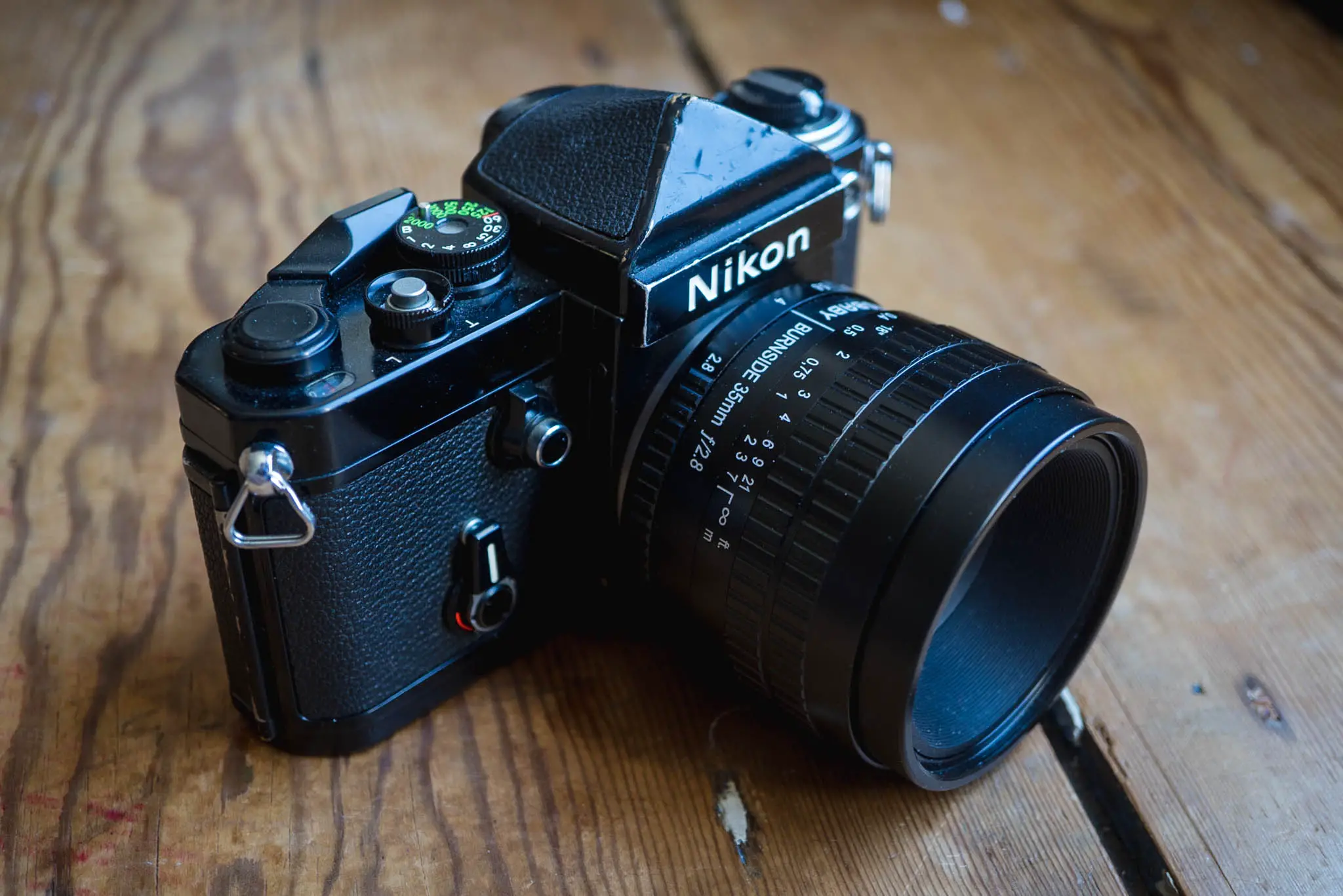
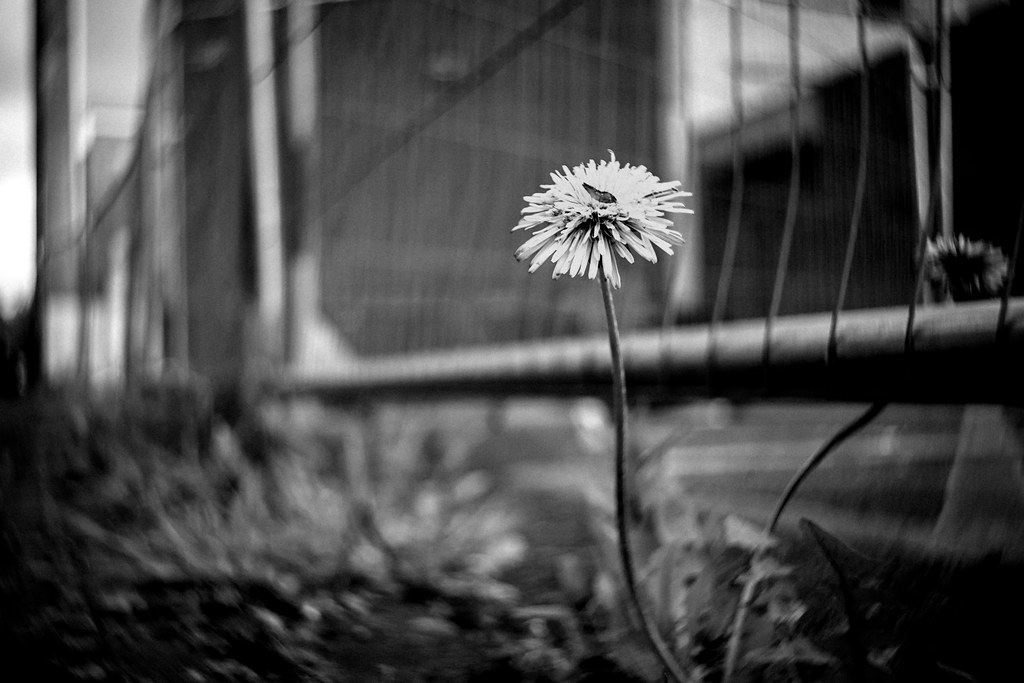
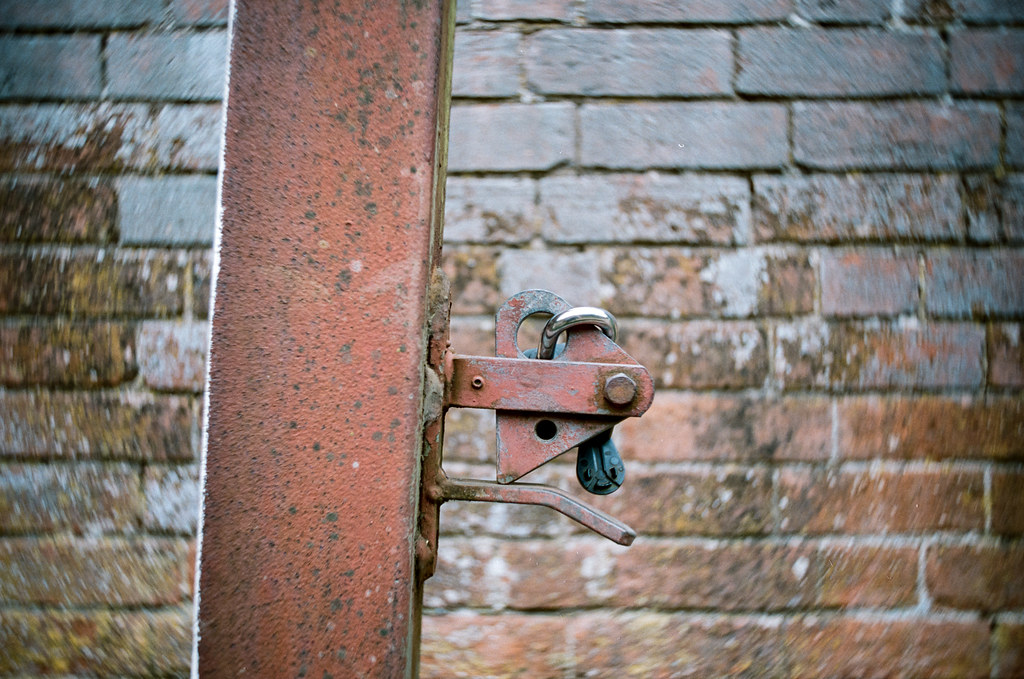








Comments
Malcolm Myers on Lensbaby Burnside review – wacky, but potentially wonderful
Comment posted: 27/05/2018
Terry B on Lensbaby Burnside review – wacky, but potentially wonderful
Comment posted: 27/05/2018
I know that there are some who like weird effects from some lenses, but I really do wonder for how long the novelty will last before the effects become repetitive, boring and tiring? As one may guess I'm not a fan, preferring my lenses to be as neutral as possible and any defects are limited to what optical flaws are necessary due to design or price.
Comment posted: 27/05/2018
Toby Van de Velde on Lensbaby Burnside review – wacky, but potentially wonderful
Comment posted: 03/06/2018
I don’t use it as frequently as once a month, but when I do it usually produces an image I am happy with.
It took me a good while to get to grips with it but once I figured it out it started to produce.
Comment posted: 03/06/2018
Karim Amrani on Lensbaby Burnside review – wacky, but potentially wonderful
Comment posted: 23/07/2018
I got this 'lensbaby'. Cheap and as great an Helios 44-2 optically...
https://www.ebay.com/itm/Tilt-shift-lens-lensbaby-analog-for-nikon-canon-pentax-and-others/113015586297
(I'm not the seller, just a happy customer)
;)
Comment posted: 23/07/2018